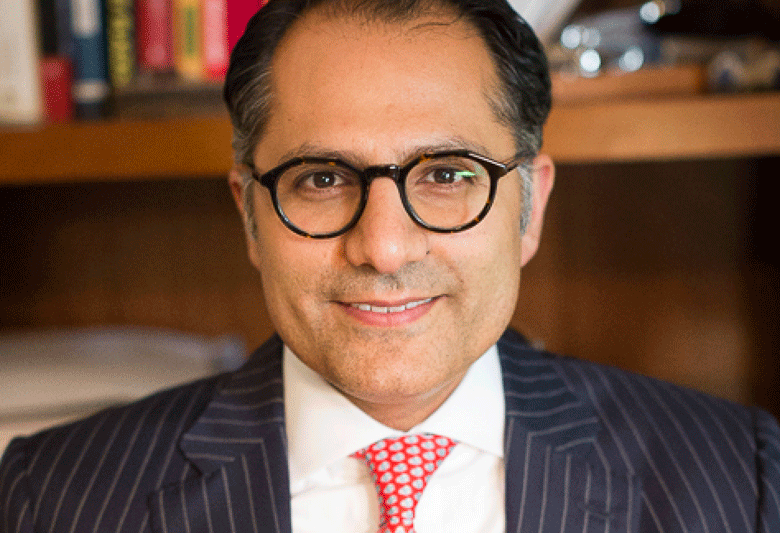

In explaining the key drivers behind the success of US engineering firm GE, the company's former chairman and CEO, Jack Welch, is quoted to have said: “Number one, cash is king … number two, communicate … number three, buy or bury the competition.”
If there is one thing a leader in any industry can be certain of when looking to the future, it is that there will always be more competition, and the Islamic finance industry is no different.
20th-century banking
When we look at the competitive landscape of the Islamic finance industry, the biggest challenge we see facing institutions today is their continued adherence to an antiquated, 20th-century, value-chain approach to financial services.
 The “bank is king”, supplier-driven approach weakens institutional competitiveness in two key ways.
The “bank is king”, supplier-driven approach weakens institutional competitiveness in two key ways.
Firstly, it creates an internal rather than an external orientation in the organisation. This is particularly damaging in product development as it orients institutions to focus on developing and launching products based on their own capabilities and resources, rather than on market and consumer needs. This is a great way to set an institution up to be buried – or bought at a very steep discount, at best.
Secondly, the “bank is king” approach of current Islamic finance institutions negatively impacts competitiveness by orienting data and technology spending decisions around a cost-driven rather than a revenue-driven approach.
In supplier-driven models, data and technology spending decisions tend to be reduced to process flow automation and operational efficiency calculations, and tend to ignore potential cross-sell and positive revenue impacts that this spend can have. The net result is that incumbent financial services providers find themselves disconnected from their consumers and peddling products that no one wants to buy.
21st-century banking
A 21st-century financial services value chain is oriented around the consumer and focuses on demand rather than supplier-driven factors to inform organisational strategy and competitiveness. Organisations adhering to such a value chain recognise that the “consumer is king”. This enhances competitiveness in two key ways.
Firstly, it orients products and the product-development process around the external environment and external factors. It restructures systems and processes to collect, analyse and integrate consumer data to drive the product development process. This not only includes understanding the customer journey, but also understanding the breadth and depth of consumer engagement and emotional well-being throughout the process.
Secondly, it reorients data and technology spending decisions away from being predominantly cost and efficiency decisions, to being competitiveness decisions that integrate cost and efficiency in the evaluation analysis. In the 21st-century value chain, disruptive technologies go from being threats to becoming value-added partners. For example, partnering with or acquiring robo-advisory platforms can enable incumbent investment managers to penetrate low-income savers and investors through technology-enabled platforms that deliver revenue through scale versus margin.
Data integration
Customer relationship management systems can be transformed from data repositories into data mines that push cross-sell opportunities between business units rather than having to rely on personal relationships between bankers to drive cross-selling.
By integrating data and technology explicitly into the product-development lifecycle and the customer experience, data and technology become revenue-enhancing levers and not just cost-control and efficiency controls.
This empowers organisations to become buyers and helps them to avoid the graveyard of “has-beens”.
Competitive strategy
If Islamic finance institutions are, by and large, still stuck in the 20th century – and if they need to embrace the 21st century in order to remain competitive – how do they do so? The biggest barrier to transitioning towards greater competitiveness is strategy.
Strategy and strategic planning are areas that Islamic finance organisations look at as a management requirement, to keep the board of directors and the regulators happy, and the annual spend of a couple of million dollars to outsource this task to a consultant is well worth it.
To avoid being bought or buried, Islamic finance institutions will need to shift away from five-year strategies and an annual approach to strategic planning towards a data-driven, continuous improvement approach.
External conditions are constantly evolving and effective organisations have better insight into those changes and can develop and implement responses more quickly and effectively than their competition.
Understanding finance trends
When we look at the geopolitical landscape, the term Islamic finance is still a significant barrier to entry into many markets.
Organisations that have effectively understood local and global political trends, and that have been able to adapt their approach to geopolitical forces, have proven successful in expanding Islamic finance products in seemingly hostile markets.
This is a function of good data and insight being integrated into strategic and tactical decision-making on an ongoing basis.
Cash may still be king and communication may still be number two, but for the Islamic finance industry, 2019 is going to be a year when we see many institutions bought or buried. The competition is fierce and many organisations are still operating in the 20th century.
As American engineer and statistician W Edwards Deming said: “In God we trust; everyone else, bring data.” Very sage advice for success in a very competitive marketplace.
About the authorKavi Chawla is a partner at Baton Global and a visiting scholar and facilitator at Drake University. |
You might also like...

UAE rides high on non-oil boom
26 April 2024

Qiddiya evaluates multipurpose stadium bids
26 April 2024

Al Ula seeks equestrian village interest
26 April 2024

Morocco seeks firms for 400MW wind schemes
26 April 2024
A MEED Subscription...
Subscribe or upgrade your current MEED.com package to support your strategic planning with the MENA region’s best source of business information. Proceed to our online shop below to find out more about the features in each package.




